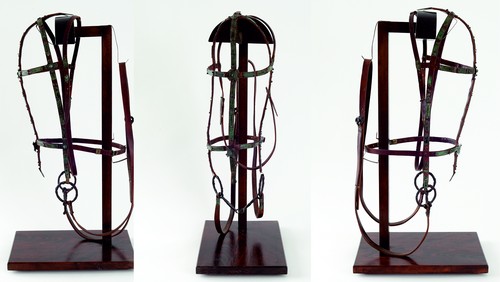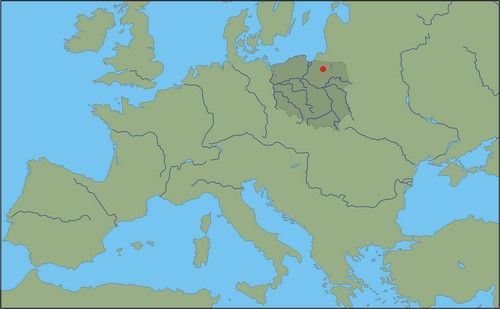

Reconstruction of a horse bridle from grave XVII. Original surviving bronze pieces were supplemented with a few brass copies to reproduce the original arrangement of the entire set of ornaments. It consists of a double iron bit, two bronze buckles, two lancet-shaped strap-ends, seven bronze cross fasteners and two bridle plates as well as 33 larger and 44 smaller bronze strap fittings. Some bronze objects have traces of silver plating. All are decorated – majority with a simple motif of parallel lines. It is the richest and the best preserved bridle found in the cemetery at Tumiany.
The excavations at the cemetery at Tumiany were conducted in 1970-1972 by Krzysztof Dąbrowski and Tadeusz Baranowski from the Institute of History of Material Culture (the modern-day Institute of Archaeology and Ethnology) of the Polish Academy of Sciences in Warsaw. The former excavation, as early as in 1893, was ran by Johannes Heydeck from the Prussian Society of Antiquities. All elements of the bridle were part of the inventory of horse burial no. 30 discovered in 1971. It was a 9-year-old stallion buried in a separate pit, at a depth of about 45 cm, with his head facing south.
Chronology:
the 5th century – the 6th century AD
Museum collection:
the Museum of Warmia and Masuria in Olsztyn
by K. Martyka
















